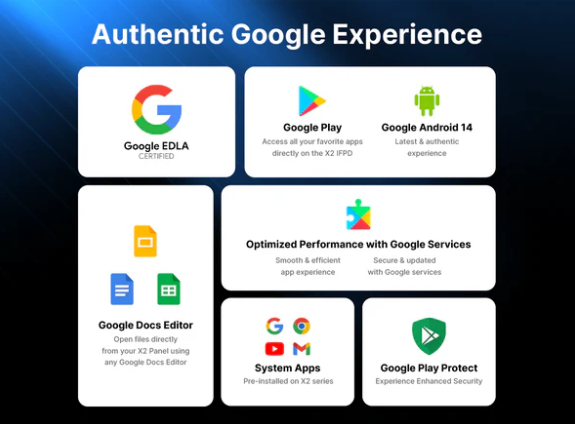The world of education is undergoing its most exciting transformation yet. For decades, classrooms have evolved slowly – from chalkboards to whiteboards to projectors. But today, the rise of digital board for teaching technology, infused with artificial intelligence, is setting the stage for a new era of smart, connected, and personalized learning.
This is not just about replacing old tools with new ones – it’s about reimagining how teaching happens. Schools everywhere are looking to integrate advanced tools like AI-powered digital boards to keep pace with the needs of modern learners. For institutions exploring this upgrade, a good starting point is checking out a trusted digital board for teaching that combines interactivity, durability, and future-ready features.
Why AI Matters in Modern Classrooms
Artificial Intelligence has been reshaping industries worldwide, and education is no exception. In classrooms, AI is the silent assistant that makes teaching more efficient and learning more engaging. When integrated with digital boards, AI allows for:
- Personalized learning: Adapts lessons to match each student’s pace.
- Real-time insights: Provides instant feedback on student performance.
- Automated assistance: Helps teachers save time by grading quizzes or generating summaries.
- Predictive analytics: Identifies struggling students early and suggests interventions.
In essence, AI transforms digital boards from teaching tools into modern education tools that act like co-teachers, amplifying the human touch with intelligent technology.
The Evolution of Digital Boards into AI-Powered Systems
Traditional digital boards were primarily interactive displays. Teachers could write, annotate, and share content easily. Today, however, AI integration is pushing these boards further:
- Voice recognition allows teachers and students to control boards hands-free.
- Natural Language Processing (NLP) enables real-time translations for multilingual classrooms.
- Smart recommendations help teachers plan lessons tailored to curriculum and student needs.
- Cloud connectivity ensures lessons are saved, shared, and accessible anytime, anywhere.
This leap transforms the classroom into an immersive experience where technology doesn’t just support teaching – it elevates it.
Why Schools Need to Adopt AI-Powered Digital Boards
1. Boosting Student Engagement
Students today are digital natives. AI-powered digital boards keep them engaged by blending multimedia, gamified learning, and interactive exercises that make even complex topics exciting.
2. Supporting Diverse Learners
Every student learns differently. AI can adjust teaching methods in real-time, ensuring that visual, auditory, and kinesthetic learners all benefit.
3. Enhancing Teacher Productivity
Instead of spending hours preparing slides or grading assignments, teachers can rely on AI for assistance. This frees up time for what truly matters – mentoring and inspiring students.
4. Future-Proofing Education
By adopting the best digital board for teaching, schools ensure they’re not just meeting today’s needs but preparing for tomorrow’s challenges – global classrooms, remote learning, and AI-driven assessments.
Practical Applications Across Subjects
AI-powered digital boards bring every subject to life:
- Mathematics: Step-by-step problem-solving tools highlight errors instantly.
- Science: 3D simulations and AI-driven experiments explain complex theories visually.
- Languages: Pronunciation correction and real-time translation help multilingual students.
- History & Geography: Virtual tours and interactive maps powered by AI make lessons unforgettable.
These examples show how digital boards foster student engagement by turning traditional lectures into dynamic, interactive lessons.
Choosing the Best Digital Board for Teaching
Not all digital boards are created equal. When budgets are tight, schools must carefully evaluate options. Factors that define the best digital board for teaching include:
- Screen size & clarity – Large, ultra-HD displays ensure visibility for all students.
- AI-powered features – Lesson recommendations, translation, and analytics.
- Durability – Scratch-resistant glass and long-lasting hardware.
- Connectivity – Wi-Fi, Bluetooth, HDMI, and cloud integration.
- Ease of use – Simple interfaces that teachers can adapt to quickly.
If you’re comparing options, one practical benchmark worth exploring is the best digital board for teaching, which balances smart features with affordability.
Overcoming Common Concerns
Some schools hesitate to adopt AI-powered digital boards due to misconceptions:
- “It’s too expensive.” While upfront costs exist, long-term savings in maintenance, printing, and teacher efficiency often outweigh them.
- “Teachers won’t adapt.” With proper training, most teachers find these boards intuitive and supportive.
- “Technology replaces teachers.” AI doesn’t replace – it enhances, giving teachers more freedom to connect with students.
By addressing these concerns, schools can confidently embrace the shift.
ROI: Why It’s Worth the Investment
AI-powered digital boards deliver strong returns on investment through:
- Lower recurring costs: No projector bulbs or excessive printing.
- Increased admissions: Parents value schools with advanced learning environments.
- Improved outcomes: Better results raise a school’s reputation.
- Teacher retention: Modern tools make teaching less stressful and more fulfilling.
When framed this way, AI-powered boards aren’t costs – they’re catalysts for growth.
The Future: AI + Cloud + Collaboration
We’re only scratching the surface of what’s possible. In the near future, digital boards may:
- Track emotions to adjust lesson delivery in real time.
- Provide AI-driven performance analytics for each student.
- Connect schools globally through cloud-based collaborations.
- Integrate AR/VR for immersive experiences like virtual field trips.
This future will make classrooms more inclusive, global, and student-centered than ever before.
Final Thoughts
The digital board for teaching has already proven itself as a cornerstone of smart classrooms. With AI integration, it’s now becoming a true game-changer – personalizing learning, empowering teachers, and future-proofing education.
For schools aiming to lead rather than follow, choosing the best digital board for teaching is not just a technology decision – it’s a vision for the future. It’s about creating classrooms where students are engaged, teachers are supported, and learning is limitless.
In the story of education’s evolution, AI-powered digital boards are not the end – they are just the beginning of a smarter, more connected, and transformative era.

